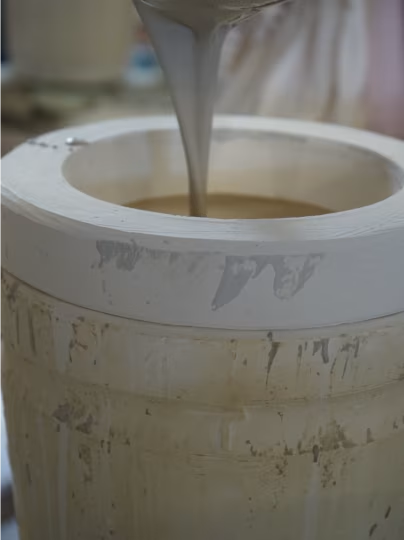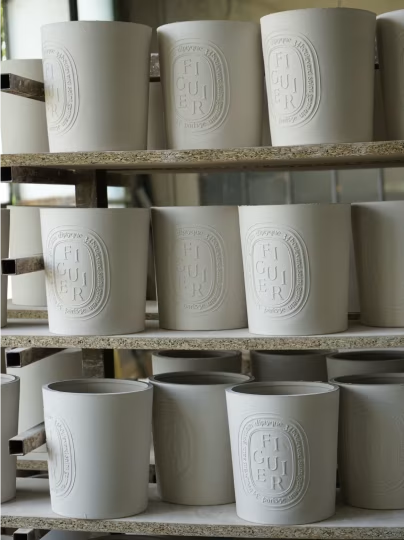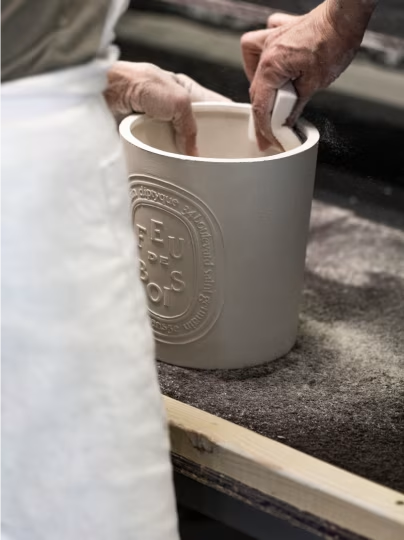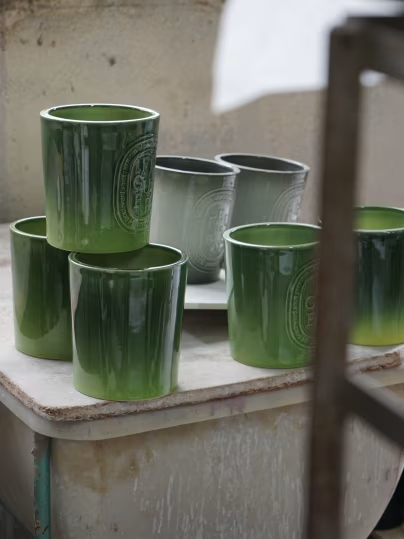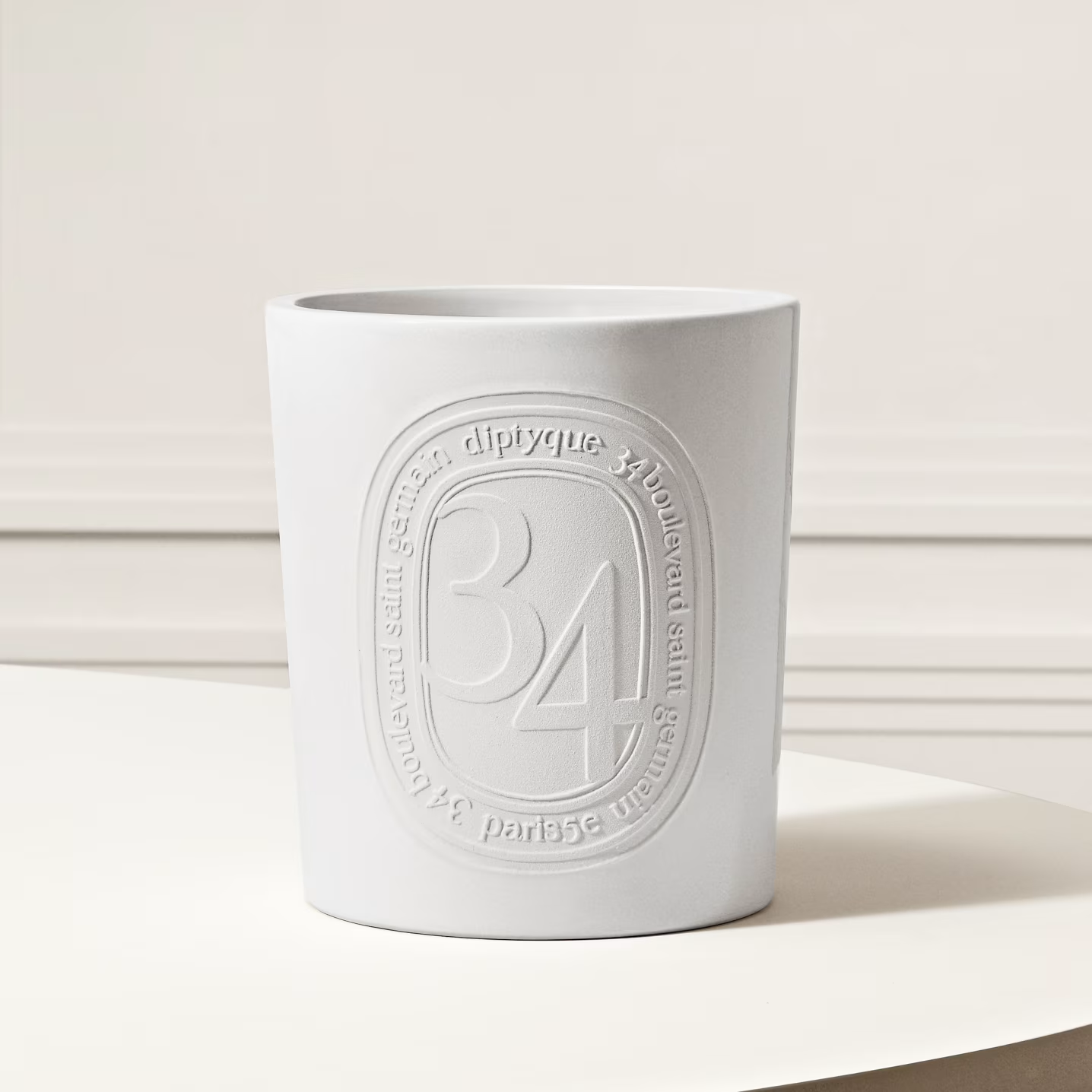Each pot containing our large Diptyque candles takes a week to produce. The process, which is entirely carried out by hand, is a patient metamorphosis of matter, with long intervals between each gesture. The slip, a mixture of clay and water, is poured into the plaster mould engraved with Diptyque’s graphic oval, the Maison’s signature. Each mould produces just one pot a day. Once removed from the mould, the pot is left to dry. Before being fired, the material is brushed and sponged while still raw to remove any traces or imperfections.
The stoneware vessel comes alive in the flames of the kiln, which is heated to 980 degrees, revealing the true elegance of the design. Once fired, the pot is coated in glossy white, translucent grey, deep red, natural green or matt black glaze to match the candle’s scent. Finally, the glaze fuses with the clay in a last firing at 1280 degrees to bring its brilliance to life. The moment the scented wax is poured at the Manufacture Française de Bougies in Provence marks the final stage in this creation combining olfactory, visual and tactile pleasure in a single object.

